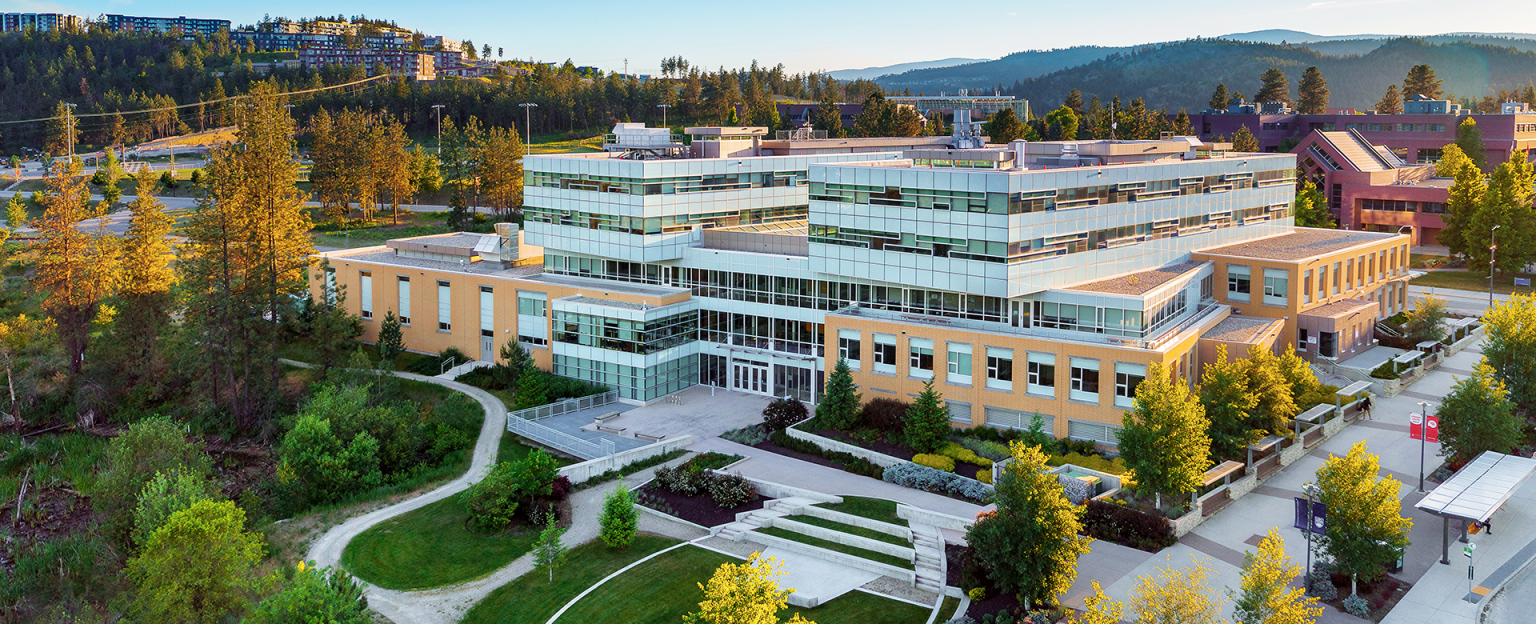
Rapid growth of urban populations and associated environmental concerns are challenging city planners and developers locally and around the world to consider sustainable building systems.
In response, with new CLT and glulam timber technology, mid- and high-rise timber buildings are becoming attractive solution. Current objective-based design approaches in the NBCC 2020, however need additional provisions to cover the unique design challenges posed by such tall timber-based hybrid buildings. These challenges span from: a lack of seismic force modification factors calibrated with the notion of collapse risk, to a lack of fire performance design guidelines.
On Thursday, Nov. 28, UBC Okanagan is hosting a talk by Dr. Solomon Tesfamariam called Performance-Based Fire Design of Tall Timber Buildings: Modelling and Experimental Capability to address this topic.
Performance-Based Fire Design of Tall Timber Buildings: Modelling and Experimental Capability
Date: Thursday, Nov. 28
Time: 12 pm (noon)
Speaker: Dr. Solomon Tesfamariam
Location: EME 4218, UBC Okanagan Campus.
Light refreshments will be provided for those attending in person.
Or join via Zoom:
| Join Zoom Meeting | |
| Phone one-tap: | +17789072071,,63493245204#,,,,,,0#,,776134# |
| Meeting URL: | https://ubc.zoom.us/j/63493245204?pwd=oxn8BmAAhX3X7bFY4lUkKMQc2Llr3F.1&from=addon |
| Meeting ID: | 634 9324 5204 |
| Passcode: | 776134 |
About Dr. Solomon Tesfamariam
 Dr. Solomon Tesfamariam is a Professor and University Research Chair in the Department of Civil and Environmental Engineering at the University of Waterloo. For over twenty years, Professor Tesfamariam has been a leader in the pedagogy and research on sustainable design of tall-timber building and decision-making tools for infrastructure (asset) management.
Dr. Solomon Tesfamariam is a Professor and University Research Chair in the Department of Civil and Environmental Engineering at the University of Waterloo. For over twenty years, Professor Tesfamariam has been a leader in the pedagogy and research on sustainable design of tall-timber building and decision-making tools for infrastructure (asset) management.
Prior to the University Waterloo, he was a professor at the University of British Columbia (UBC) (2008-2023) where he held Principal’s Research Chair in the Resilient and Sustainable Built Environment. In addition, Professor Tesfamariam worked at the National Research Council Canada (2000-2007) on developing different decision support tools for buried infrastructure management. The unique blend of the academic and research experience has enabled Professor Tesfamariam to understand the challenges in the industry and develop unique solutions.
Professor Tesfamariam has pushed the boundary for tall timber (hybrid) building under multi-hazard design considerations. Professor Tesfamariam is a designated expert in the Council on Tall Buildings and Urban Habitat (CTBUH). He is also a subcommittee member of CSA O86 – Engineering Design in Wood on Systems Design and Connection. His contributions have directly resulted in the expansion of tall timber (hybrid) structure guidelines and gained international recognition throughout academia and industry. His research activities in infrastructure management entail developing decision making tools for seismic risk assessment and management of civil infrastructure systems and risk-based aging infrastructure management (buried pipes, buildings, bridges, etc.).
Professor Tesfamariam has published over 210 peer-reviewed papers in prestigious journals (e.g., ASCE Journal of Structural Engineering, Structural Safety, Earthquake Spectra, and Earthquake Engineering & Structural Dynamics) and co-edited a book “Handbook of Seismic Risk Analysis and Management of Civil Infrastructure Systems”. Professor Tesfamariam is in the editorial board member of various international journals (ASCE Journal of Performance of Constructed Facilities, Soil Dynamics and Earthquake Engineering, Frontiers in Built Environment: section Earthquake Engineering, Sustainable and Resilient Infrastructure, ICE’s International Journal Infrastructure Asset Management). Read more.
About the Builder Better Cluster
The lack of affordable and available housing affects communities across the globe and is complicated by natural disasters like earthquakes or fire due to climate change. The Build Better Research Excellence Cluster is researching solutions to improve reinforced concrete for building tall, high-density housing that is more sustainable and resilient to disasters. The Build Better research cluster brings together leading researchers with expertise in optimized and resilient supply chains, material science, multi-hazard analysis, architecture, structural engineering, economics and management to help contribute to affordable, sustainable housing construction. Read more.